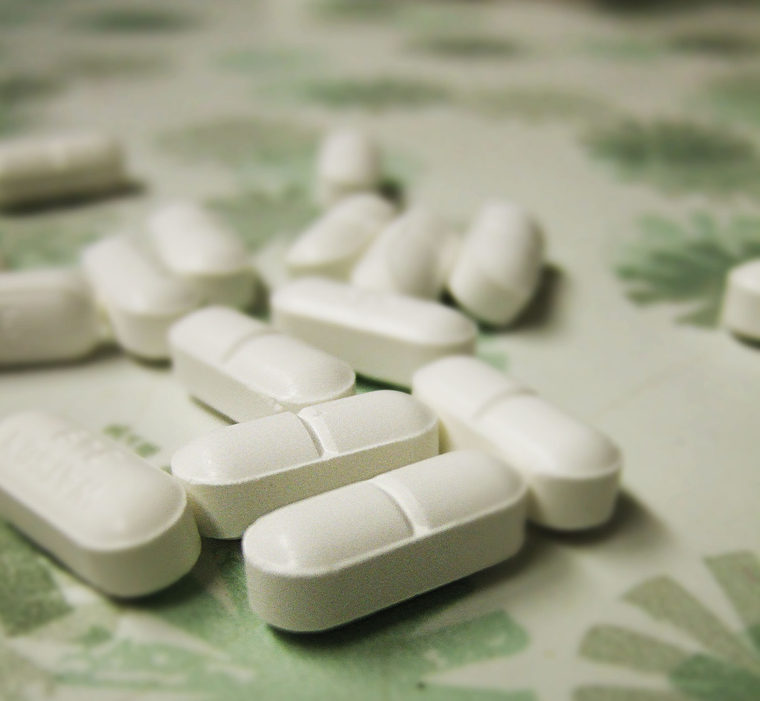Tuesday, August 1st 2017 (WASHINGTON) – In an interim report issued Monday, the presidential commission to address the opioid addiction crisis called on President Donald Trump to declare a national emergency to marshal the resources needed to a public health crisis that is now taking as many as 50,000 lives every year.
According to the report, released after the commission’s second meeting, the annual death rate from drug overdose in the United States has now exceeded the number of casualties from gun homicides and car accidents combined. Every day across the country an estimated 142 people die from overdose, a death toll the panel equated to the number of fatalities on September 11 every three weeks.
That high cost informed the commission’s first and most urgent recommendation to President Trump. “Declare a national emergency under either the Public Health Service Act or the Stafford Act,” the panel stated. “You, Mr. President, are the only person who can bring this type of intensity to the emergency and we believe you have the will to do so and to do so immediately.”
Under those emergency authorities, the president can more quickly and effectively mobilize resources to the most vulnerable states and coordinate actions across federal agencies to respond to what is being increasingly recognized as a public health emergency.
After seeing the number of deaths from prescription and illegal opioids, like heroin, skyrocket to 33,000 people in 2015, the Centers for Disease Control (CDC) to designated the problem an “epidemic.”
Public health organizations along with federal and state governments have taken steps to address the problem in recent years with only relatively small scale successes compared to the size of the problem.
The latest numbers that have been reported from coroners’ offices in each of the 50 states indicate a continued upward trend in the number of overdose deaths last year and in the first half of 2017. The CDC has not yet published a report on the number of overdose fatalities in 2016.
At the end of March, President Donald Trump established the five-member opioid commission by executive order. The panel, headed by New Jersey Governor Chris Christie convened its first meeting on June 16 and is expected to issue its final report by October.
Gary Mendell, CEO and founder of Shatterproof, a non-profit group focused on addiction, was among the experts called on to testify at the first meeting.
“There is no question that declaring a national emergency will provide avenues for the administration that they wouldn’t have otherwise … to marshal national resources to attack this epidemic,” Mendell said on Tuesday.
Mendell founded Shatterproof after losing his son to addiction.
He stressed that the federal government has to take action immediately, adding that implementing any one of the commission’s recommendations will mean one less person dying unnecessarily as a result of their addiction.
“When we think about the number of people dying everyday and what bringing resources to bear can do to reduce that number, it absolutely warrants it. This is just so needed,” he said.
Even as Mendell applauds the recommendations made in the initial report, he still sees the need for stronger measures, specifically clearly defined goals set by the government so the country can effectively measure its progress in combating the opioid crisis.
THE ROOT OF THE PROBLEM:
Studies of the opioid epidemic have resulted in a near unanimous consensus that the dramatic rise in the number of addicts coincided with the rise of prescription pain killers. As the commission explained in its report, “this crisis began in our nation’s health care system.”
By 2010, the CDC documented sales of prescription opioids, like oxycodone, hydrocodone, codeine and other drugs had increased 400 percent since 1999. By 2012, doctors were writing more than 250 million prescriptions for opioids. As the number of pills increased, so did the number of overdose deaths caused by prescription opioids.
In recent years the number of prescriptions has declined, but the roots of the addiction problem had already taken hold.
Dr. Corey Waller, legislative advocacy chairman of the American Society of Addiction Medicine (ASAM) explained that within the medical community there is”a level of guilt” among practitioners who see the problem originating in doctors’ offices and hospitals.
“I find there’s a level of guilt in the health care practitioner world right now over misinterpreting and misunderstanding the literature about opioids and coming to the realization that we are the cause of so much of this misery,” said Waller who educates providers on addiction.
A number of the presidential commission’s recommendations focus on weaknesses in the health care system.
The panel calls for mandatory physician education programs to prevent over-prescribing and also requests improvements in the state prescription monitoring programs. They also recommend allowing federal Medicaid dollars to be spent on treatment clinics and program, supporting medication assisted therapy, and arming first responders with the anti-overdose drug naloxone.
“It’s really been emotionally difficult for those of us who really want to help people,” Dr. Waller emphasized. “And now we want the tools to fix it. We really want to be part of the solution.”
In Washington State, reporters with KEPRTV spoke with doctors who acknowledged the staggering number of overdoses that have come as a result of over-prescribing opioids.
TREATING AN EPIDEMIC:
So far the response from the federal government has been incommensurate with the magnitude of the addiction and overdose crisis, according to John P. Walters, former director of the White House Office of National Drug Control Policy.
Walters served as the drug czar throughout George W. Bush’s two terms in office and warned that the preliminary recommendations issued in the opioid commission report don’t hit at the heart of the problem “of an epidemic that should be treated with epidemic measures.”
For some perspective, Congress marshaled $1.1 billion in 2016 to respond to the mosquito-born Zika virus. The virus affected roughly 36,000 people in the U.S. and its territories, including more than 2,000 pregnant women. The infections that year resulted in fewer than five reported deaths.
Individuals who are addicted to either prescription opioids, heroin and heroin-like substances number in the tens of millions. More than 20,000 babies were born with an opioid dependency, according to most recent CDC data.
To this day, CDC closely monitors the number of Zika cases, their location and other important factors that help create an intelligible picture of a problem the government responded to as a public health crisis.
“We’re not treating this like an epidemic,” Walters emphasized. “We don’t even know how many people died last year let alone last week, let alone how many people are victims. That is a level of ignorance for a deadly epidemic that is just unacceptable.”
In other parts of the country, there is already clear recognition that addiction constitutes a national emergency. In West Virginia, New Hampshire, Kentucky, Ohio, Rhode Island and Pennsylvania the overdose rates are higher than anywhere else in the country.
In recent years, a large portion of those overdose cases were the result of prescription overdoses. But as regulators began cracking down on so-called pill mills, it didn’t change the underlying problem of addiction. Many addicts shifted to cheaper and more dangerous street drugs, specifically heroin and fentanyl, a highly potent, synthetic opioid.
While the CDC has reported a quadrupling of heroin overdose deaths in the past decade, even more concerning is fentanyl, which has proven even more deadly than heroin in a number of states.
In Pennsylvania alone, more than half of the overdose deaths in 2016 were attributed to fentanyl and fentanyl-related substances.
Walters underscored that the sale of heroin and fentanyl, both illegal substances, amounts to “the most deadly criminal activity in American history.”
According to data from the Drug Enforcement Agency, the bulk of heroin and fentanyl being consumed in the United States is being brought in illegally across the southwest border. Walter argued that cutting off the supply of the most dangerous opioids, like fentanyl and heroin, are essential to addressing the public health threat.
“This epidemic is not caused by coughing and passing a virus, this is a poisoning event. These poisons are the things that are killing people,” Walters emphasized. “You cannot help the victims if you don’t stop the poison.”






